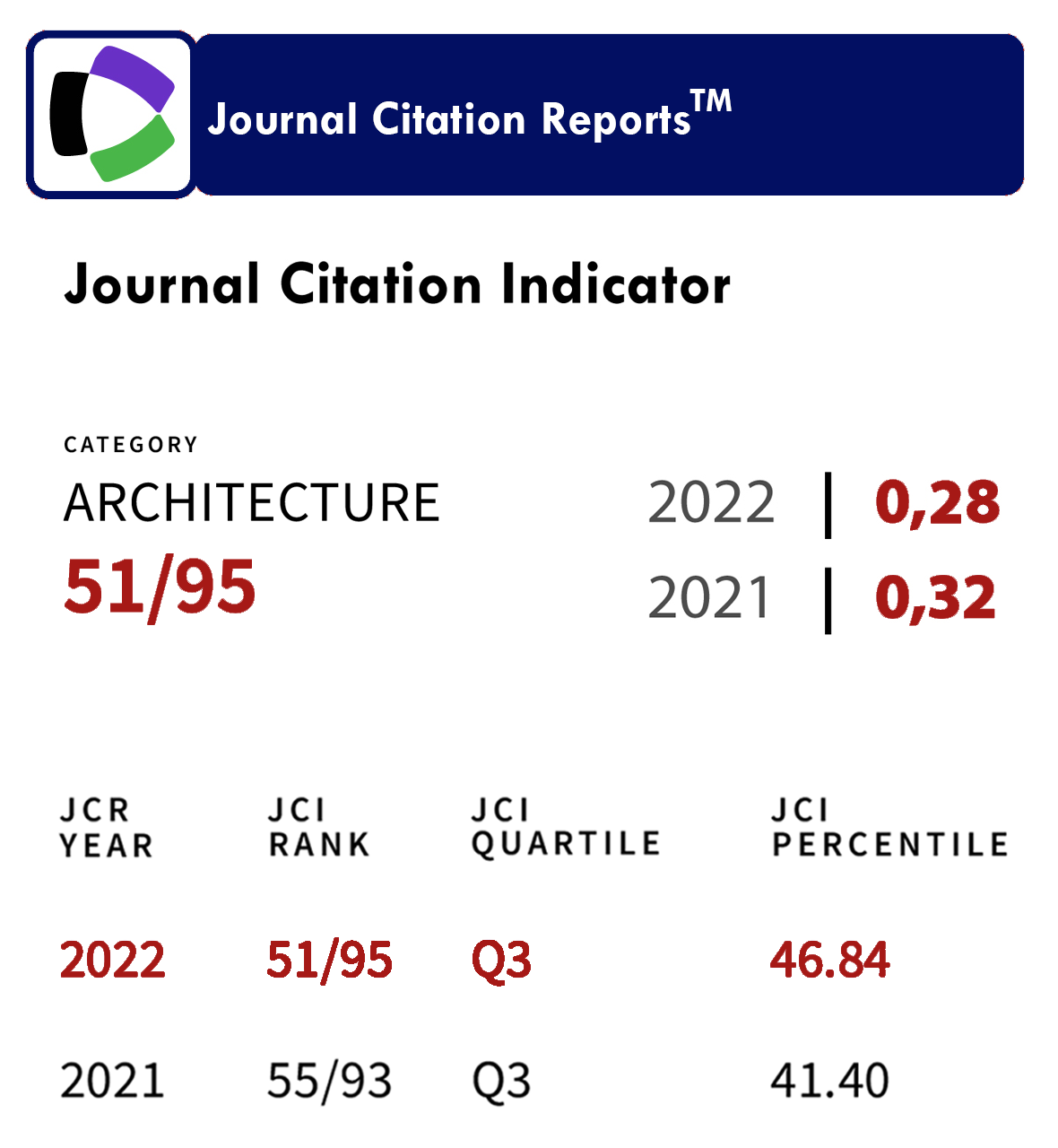The industrial storage tank transformed into architecture and the landscape: A new look through Land Art
DOI:
https://doi.org/10.18537/est.v006.n010.02Keywords:
arte, depósito, industrial, land art, paisajeAbstract
The appearance of colossal industrial deposits in our rural and urban landscapes entailed, to say the least, much criticism and a strong sentiment of rejection. And once obsolete and abandoned, their presence continued to
provoke equal or even greater skepticism. This study aims to value how the intervention in these objects and their transformation into architecture has modified their relationship with their surrounding environment as well as the
current perception people have from them, and to demonstrate the potential they hold from the landscaping point of view. The analysis of some of these projects evidence on the one hand, that due to the unique nature of these artifacts, the architects who had to face the task of transforming them had to reinvent their way of working, adopting methodologies, strategies and tools from the artistic discipline; and on the other, that the conceptual potential of these artifacts cannot be fully understood without taking into account this artistic and landscaping dimension.
Downloads
References
Beardsley, John. (1998). Earthworks and Beyond: Comtemporary Art in the Landscape. Abbeville Press, Incorporated.
Cano Sanchiz, Juan Manuel. (2007). Arqueólogos en la fábrica. Breve recorrido por la historiografía de la arqueología industrial. SPAL. Revista de Prehistoria y Arqueología de la Universidad de Sevilla, (16), 53-67.
Charney, Melvin. (2008). Les silos a grains revisites. Cahiers de la recherche architecturale & urbaine, (22/23), 205-218.
Cleary, Mark. (2012). 21st century architecture: designer houses. Mulgrave: Images.
Costal, A., Torrent, & Jaume. (2006). Àlbum 1888 i 2005: dues visions de l'Alt Empordà. Figueres: Col.legi d'Arquitectes de Catalunya, Demarcació de Girona, Delegació Alt Empordà.
Crowe, S., & Browne, K. (1954). Industry exploited. Architectural Review, 226-233.
Garrett, R. (1957). The gasholder problem in the landscape. Planning Outlook, 4 (3), 23-27.
Gustafson, Kathryn. (2005). Moving Horizons: The Landscape Architecture Of Kathryn Gustafson And Partners. Basel: Birkhäuser.
Jenkins, Bruce. (2011). Gordon Matta-Clark: Conical Intersect. London: Afterall.
Karavan, Dani. (1992). Monument au Neguev [Negev monument]. Formes et structures, (4), 71-74.
Karavan, D., & Karavan, A. (1970). Monument to commemorate the defense of the water pipe-line, Negev desert. Architecture d'Aujourd'hui, (148), 25-27.
King, Lyall. (2001). Information, Society and the Panopticon. The Western Journal of Graduate Research, 10, 40-50.
Knudsen, Jacqueline. (2008). Herbestemming gashouder als kantoor [Conversion of a gas holder into offices]; Architects: HET architectenbureau. ArchitectuurNL, 63 (6), 36-39.
Lailach, Michael. (2007). Land art. Hong Kong: Taschen.
Malpas, William. (2008). Land Art in the U.S.: A Complete Guide To Landscape, Environmental, Earthworks, Nature, Sculpture and Installation Art In the United States (Sculptors). Crescent Moon Publishing.
Marrodán, Esperanza. (2007). De la fascinación formal a la nostalgia. La ruina industrial en el paisaje contemporáneo. Bienes culturales: Revista del Instituto del Patrimonio Histórico Español, 103-117.
McGuire, Penny. (1994). Delight. Architectural review, 194 (1170), 98.
McKee, Bradford. (2011). Sky art. Landscape architecture magazine, 101 (5), 138-141.
Milani, Raffaele. (2008). El Arte del Paisaje. Madrid: Biblioteca Nueva.
Ortiz Sanz, J., Tejeiro Rodriguez, T., & Fanjul Alonso, M. (1996). Evaluación del impacto paisajístico producido por las acequias de riego y los depósitos para abastecimiento de agua mediante el uso de técnicas de simulación. Informes de la Construcción, 47, 441-442.
Paulo Roselló, Miriam. (2012). El espectador desorientado: luz, espacio y percepción en las instalaciones de James Turrell. BAJO PALABRA. Revista de Filosofía, (7), 195-206.
Picon, Antoine. (2000). Anxious Landscapes: From the Ruin to Rust. Grey Room, (1), 64–83.
Raquejo, Tonia. (1998). Land Art. Madrid: Nerea.
Riley, Robert B. (1977). Grain elevators: Symbols of time, place and honest building. AIA journal, 66 (12), 50-55.
Tiberghien, Gilles A. (1995). Land art. Paris: Carré.
Van Voorthuijsen, Anka. (2008). Meditatiecentrum in een watertoren Delft [Meditation centre in a Delft water tower]. Architects for conversion: Rocha Tombal Architecten. ArchitectuurNL, 63 (2), 14-17.
Water towers can enhance landscape. (1960). Concrete quarterly, (47), 30.
Weilacher, Udo. (1999). Between landscape architecture and land art. Basel: Birkhäuser.
Wicke, Danny. (2009). Opening shot. Blueprint, (274), 16-17.
Published
How to Cite
Issue
Section
License
The Journal declines any responsibility for possible conflicts derived from the authorship of the works that are published in it.
The University of Cuenca in Ecuador conserves the patrimonial rights (copyright) of the published works and will favor the reuse of the same ones, these can be: copy, use, diffuse, transmit and expose publicly.
Unless otherwise indicated, all contents of the electronic edition are distributed under a Creative Commons Attribution-NonCommercial-ShareAlike 4.0 International License.






